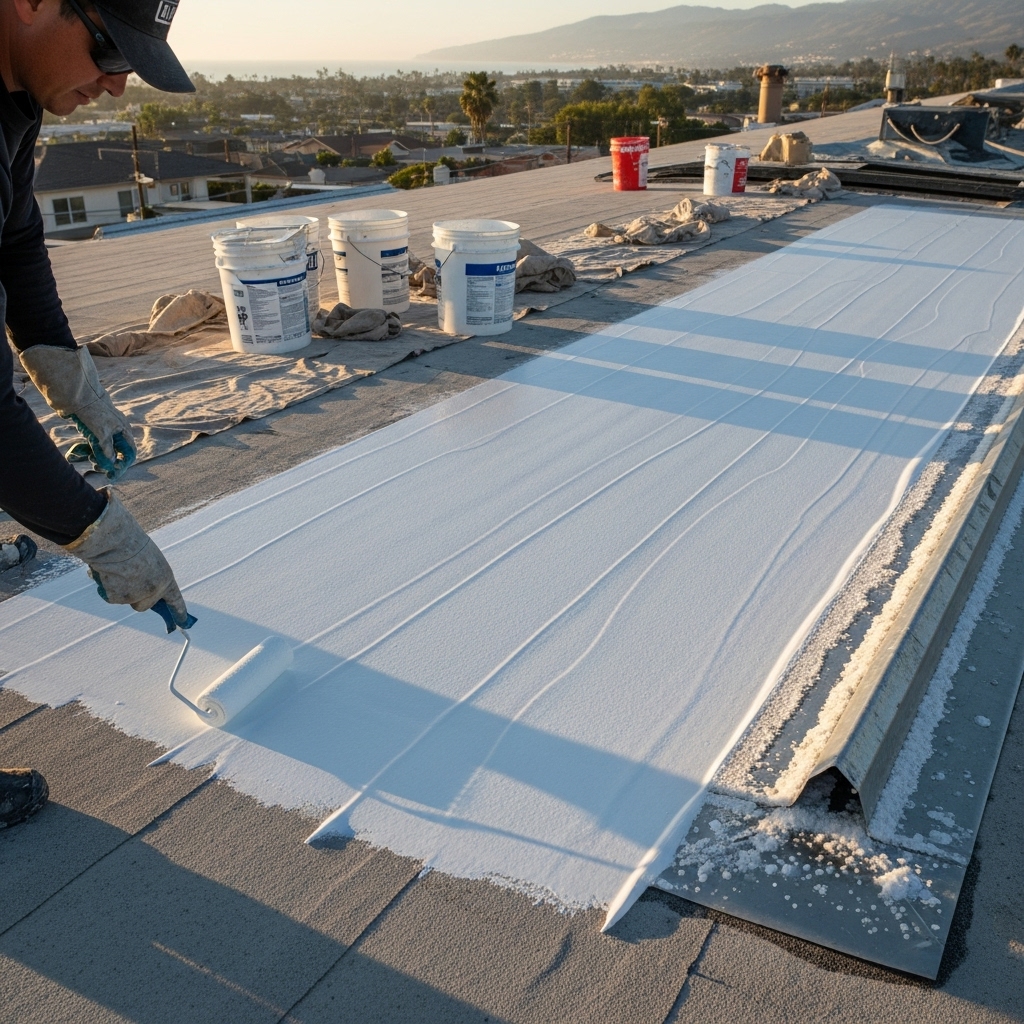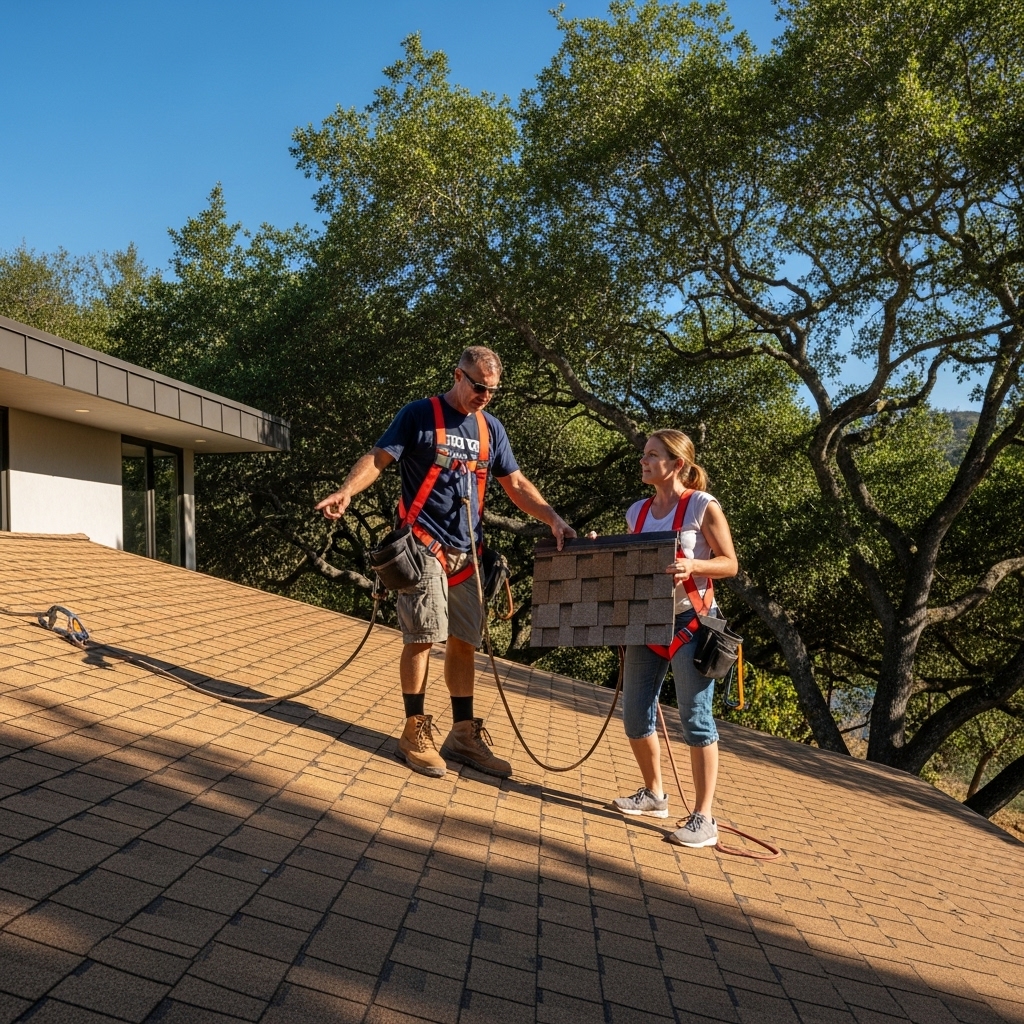Coatings can add years of life to a roof in Oxnard, but success depends on choosing the right product for the membrane and applying it under the right conditions. For TPO and PVC systems in particular, surface chemistry and preparation are everything. These thermoplastic membranes have relatively low surface energy, which means many coatings will not adhere well without specialized primers and diligent cleaning. When you factor in our coastal environment—salt air, morning marine layer, and bright afternoon sun—the case for a careful, locally informed approach becomes even stronger. If you are considering a refresh for reflectivity, added weather protection, or to extend service life, it helps to begin with a clear picture of what flat roofing coatings can and cannot do for TPO and PVC in Ventura County.
Start with the roof’s condition. Coatings are not a cure-all; they succeed when the underlying membrane is still sound. Seams should be intact, flashings secure, and the substrate dry. In Oxnard, where overnight moisture can linger on the surface, it is easy to underestimate how long it takes for a roof to dry after cleaning or morning fog. Rushing that step invites adhesion problems. A thorough inspection, moisture check, and documentation of seam integrity set the stage. Any issues—open laps, punctures, or deteriorated flashings—should be corrected before coating.
Cleaning is more than a quick rinse. Salt, grime, and biofilm from standing moisture can create a thin barrier that weakens adhesion. Crews typically use manufacturer-approved cleaners and soft-bristle agitation to lift contaminants, followed by an abundant rinse. On TPO and PVC, a solvent wipe or specific surface prep solution may be recommended before priming. The goal is a clean, dry, slightly receptive surface that will bond tightly to the chosen coating. This step often takes longer in our area because the marine layer delays dry time; patience here pays dividends in performance.
Primers tailored to TPO and PVC make a measurable difference. Many silicone and acrylic systems require a specialty primer that etches or chemically prepares the thermoplastic surface. Skipping primer on low-energy membranes is one of the fastest ways to end up with peeling or patchy adhesion. Pros perform adhesion tests—small patches applied and checked after cure—to confirm the system pairing will hold under local conditions. It is a simple step that avoids surprises later.
With prep in hand, product selection becomes the big decision. Silicone, acrylic, and polyurethane are the most common categories used in our region. Each has strengths and trade-offs. Silicone is prized for its resistance to ponding water and UV stability, an attractive combination for roofs that may hold water after a storm or on buildings where slopes are shallow. Acrylics deliver excellent reflectivity and are often cost-effective in terms of material performance, but they are more sensitive to standing water and cure best when the air is dry and temperatures are within a comfortable range. Polyurethane coatings offer robust abrasion and impact resistance, a good fit around mechanical areas and high-traffic paths, and can serve as a reinforcing layer beneath a silicone or acrylic topcoat in some systems.
For TPO and PVC in Oxnard, silicone frequently leads the conversation because our roofs can see ponding during persistent rains, and silicone’s hydrophobic nature handles those conditions well. That said, many acrylic systems perform admirably when the roof drains properly and crews can count on a dry application window. Polyurethanes, applied as base or intermediate coats, can bolster seam areas and traffic zones. The right combination depends on the roof’s drainage, exposure, and how the building uses the roof—whether there is regular foot traffic, nearby exhaust, or vibration from equipment.
Seams and details need special treatment. Even when seams look good, reinforcing them before coating is smart practice. On TPO and PVC, that can mean heat-welding loose edges first, then embedding polyester fabric or scrim in a compatible mastics or base coat along seams, inside corners, and at penetrations. Drains, scuppers, and parapet transitions receive similar attention. Those reinforcements distribute stress and give the topcoat a stable base, so it can flex and weather without cracking or pulling back at the most vulnerable points.
Application technique matters as much as product choice. Oxnard’s breezes can turn a spray day into a cleanup challenge, so crews often use rollers in addition to or instead of airless spray, especially along edges and on smaller roofs. When spraying, wind screens and careful staging help control overspray. Mil thickness is verified during application to meet manufacturer requirements—too thin risks premature wear, too thick can slow cure or create surface defects. Between coats, cure time is protected; in our marine layer, the surface may look dry while solvents are still flashing off beneath.
Timing the work around weather is essential. Coatings dislike moisture during cure. Morning fog and evening dew bookend many days in Oxnard, so application windows tend to center on late morning through afternoon when the surface is warm and the air is drier. Technicians watch dew point spread—how much warmer the surface is than the air’s dew point—to avoid condensation during cure. The crew may sequence the job so that eastern exposures are coated later, after morning shade lifts, and western exposures earlier to leave time before dew forms in the evening.
Reflectivity and energy performance are part of the appeal. A fresh, bright coating can lower surface temperatures and reduce heat gain, which supports comfort inside and aligns with California’s energy priorities. For many buildings, restoring reflectivity through coating is a practical way to refresh performance between full replacements. That said, coating is not a substitute for addressing structural or drainage problems; it is a protective finish that works best on a roof already in fundamentally good condition.
Maintenance after coating is straightforward but important. Keep drains clear, protect coated surfaces from sharp tools and dragging equipment, and plan for periodic inspections, especially after significant wind or rain. If traffic is expected, apply walk pads or designate routes to concentrate wear in protected zones. When touched up, use the same system products so compatibility remains intact. Documentation—batch numbers, application dates, and thickness checks—will help with future touch-ups and any warranty conversations.
Speaking of warranties, most coating manufacturers offer system coverage when their prep, primer, and application guidelines are followed and verified. For TPO and PVC, those guidelines typically require the specific primer and adhesion tests mentioned earlier. Photos, wet mil readings, and cure time records support warranty issuance. Partnering with a local contractor who knows these steps and Oxnard’s weather patterns reduces risk and keeps paperwork smooth.
There are times when coating is not the right answer. If the membrane has widespread failures, if water intrusion has saturated insulation, or if the roof structure needs repair, coating would only hide deeper issues temporarily. In those cases, replace or restore first, then consider a coating to augment performance once the system is sound. A reputable team will tell you when to hit pause on the coating idea and address fundamentals.
In the middle of all these technical choices is the practical consideration of how your building operates day to day. If odors from solvents are a concern, low-VOC systems or water-based options may be preferable, paired with careful scheduling around HVAC intake. If your roof supports tenant equipment, coordinating shutdowns or temporary reroutes keeps the project moving without surprises. Clear planning is the throughline that turns a coating project from a wish into a well-executed upgrade.
Finally, think of coating as part of a lifecycle strategy. Done at the right time, it can extend service life, enhance reflectivity, and seal microcracks before they matter. Done too late, it becomes a bandage. The difference is an honest assessment and a crew that respects the details—capable prep, correct primers, smart timing, and clean execution. That is how roofs in Oxnard shrug off salt air, foggy mornings, and bright sun for years after the work is complete.
Can TPO and PVC roofs be coated successfully?
Yes, when surface preparation and product pairing are handled correctly. These membranes often require specialized primers to promote adhesion, and verification with adhesion tests is smart practice. Repairs to seams and details should precede coating, and the application window should avoid moisture during cure. With those steps in place, coatings perform well on sound TPO and PVC systems.
Which coating type is best near the coast?
Silicone is a strong candidate because it tolerates ponding water and resists UV degradation, both valuable in our coastal climate. Acrylics also perform well when drainage is good and application conditions are dry. Polyurethanes provide toughness in high-traffic or mechanically busy areas and can serve as underlayers in multi-coat systems. The right choice reflects your roof’s drainage, exposure, and usage.
Do I always need a primer on TPO and PVC before coating?
Nearly always. These membranes have low surface energy, which means many coatings will not bond reliably without a compatible primer. Manufacturers specify primers designed for thermoplastic surfaces. Skipping primer is a common cause of early failure. Adhesion testing confirms the system will hold under real-world conditions on your specific roof.
How do Oxnard’s weather patterns affect coating schedules?
The marine layer and evening dew compress the application window. Crews often work late mornings through afternoons, watching dew points and surface temperatures to ensure proper cure. Wind management and overspray control are also considerations. Planning around these conditions leads to better adhesion and a cleaner finish.
What maintenance is needed after coating?
Keep drains and scuppers clear, avoid dragging equipment, and designate walk paths. Inspect after significant weather and touch up with compatible materials as needed. Maintaining records of the coating system and application details supports any warranty and simplifies future maintenance.
If you are weighing whether to renew reflectivity and protection on your TPO or PVC roof, talk with local pros who live in this weather pattern every day. With the right plan, a coating can add durable protection and a crisp finish that stands up to Oxnard’s salt air and sun. For guidance on preparation, primers, and application windows—and a clear path from evaluation to completion—reach out to discuss your flat roofing coating options with a team that understands our coast.






